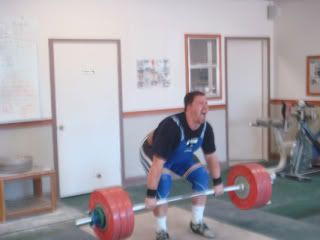Postural analysis indicates supination of the right foot, tibial external rotation of the lower leg (the shin rotated outward), knee valgus (knee caves in), and hip external rotation. The left foot is close to normal so I will focus on just the right foot in this post. There is tightness on both sides in the anterior hip musculature (the hip flexors primarily), quadriceps, and calves. Since the left side functions close to normal and the right does not we can see that flexibility alone is not the problem.
Dynamically, the right foot stays supinated essentially rendering itself useless (no toe-off) and the loading it should have helped create up the chain is lost (reducing performance of all subsequent links). This centers loading on the quadricep group (referred to as quad dominance) and because the foot/ankle is not in proper use (gripping the floor with the foot and eccentrically/spring loading the foot/plantar flexors) there is limited use of the glutes/hamstrings. There has to be an anterior/forward movement of the tibia/shin (the spring loading/gripping of the floor) to create a posterior/backward movement of the femur/upper leg. Because the shin stays relatively neutral (any forward movement of the shin here is more of a collapse of the foot/ankle and not representative of true loading of the foot/ankle musculature) the femur follows creating an anterior weight shift which further reduces loading to the glute/hamstrings.
On take-off and landing there is a lateral shift of the pelvis (on the right leg the hip shifts out to the right) which also indicates the lack of stability created by the breakdown in the kinetic chain and anterior loading of the quads (also the lack of loading to the glutes/hamstrings which would help to stabilize the leg).
There is a relationship to the core/trunk musculature but that will have to be addressed later as this post is focused on the foot/ankle, and by extension, the lower body. It is important to note that stability refers out from the core/trunk, as a pebble does in water creating ripples, so any analysis would be incomplete (which this will have to be for the sake of brevity) without analyzing the two and their interdependence.
Technical/Physical Adjustments:
The foot should be centered with loading focused on the medial side of the foot with good contact and stability felt from mid-foot to heel. The shin and knee should be aligned vertically over the foot. This will allow for appropriate loading up from the lower leg increasing balance and movement efficiency, correcting the tibial external rotation, knee valgus, and hip external rotation present before. The first 3 reps of the split squat demo below are demonstrated inappropriately and the next 3 reps make a slight correction that positionally makes a great deal of difference.
If the problem is merely positioning, this change should correct technique. This is typically not the case.
In single leg stance, as shown on the single-leg jumps, there has to be a lateral shift of the pelvis because of the change in center of mass (position of the body, specifically the hips, over the legs). However, this rotation should be slight. If the rotation is excessive, there is a breakdown in the chain as presented earlier. This is often the case with female athletes as their quadricep-angle (the angle of the femur from the hip to the knee resembles the line through the bottom right of a Q) is more distinct from the start. Differences in q-angle are attributed to wider hips in females and in single-leg stance the differences compound as female athletes often display quad-dominance with lack of recruitment to the glute/hamstring musculature. This makes female athletes more susceptible to knee problems, specifically ACL (Anterior Cruciate Ligament) injury.
Quad Dominant (Compromised Performance):
Not Quad Dominant (High Performance, specifically a 182-kilo Clean and Jerk):
Also an important thing to consider here is how an overhead goal changes landing mechanics as demonstrated on the 2-legged jumps. If the athlete must change position to adjust to a ball or other player, whether that be through a simple rotation, holding their jump longer, or otherwise, there will be a definite change in the ability to land "properly". Landing properly is not limited to landing in a perfect athletic position as many describe. Landing properly is the ability to decelerate and place appropriate loading to the body's active supports, primarily muscles, while minimizing stress to passive supports (ligaments and other joint structures). In short, it's a best case scenario for a worst possible situation. This requires a great deal of coordination, spatial awareness, muscle stiffness, and elasticity.Corrections to posture and movement mechanics will help athletes better express their physical abilities with a reduced incidence of injury. It is important that coaches and athletes analyze general and specific movement mechanics and address strengths and weaknesses appropriately to drive performance enhancement further. There are no new movements for the body so it is important that we maximize what movement we have available.


2 comments:
This blog sucks, it's never updated.
Sorry there Sir Blog-a-lot. Was out of town and I'm just not that smurt.
Post a Comment